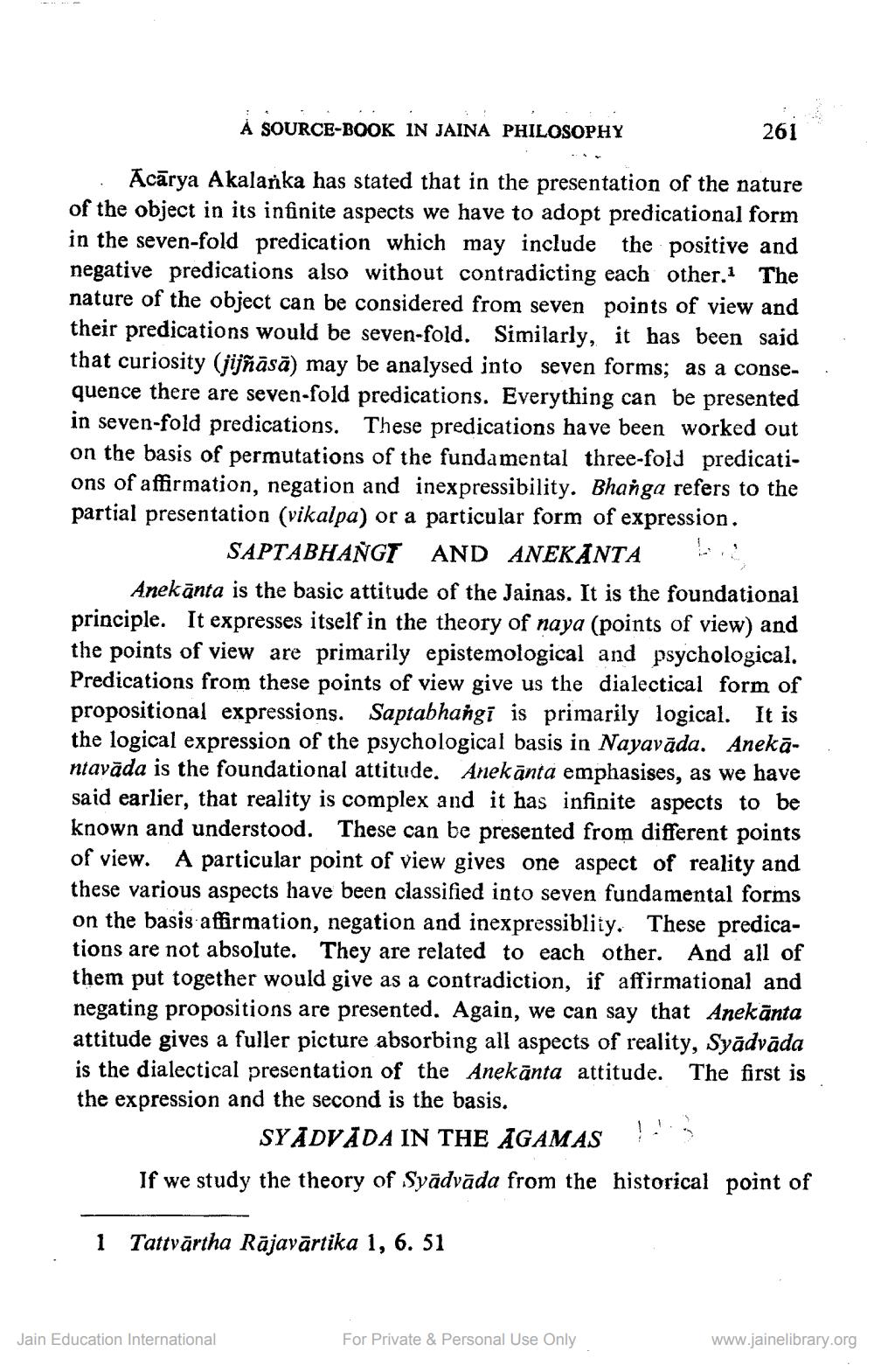________________
À SOURCE-BOOK IN JAINA PHILOSOPHY
261
. Acārya Akalarka has stated that in the presentation of the nature of the object in its infinite aspects we have to adopt predicational form in the seven-fold predication which may include the positive and negative predications also without contradicting each other. The nature of the object can be considered from seven points of view and their predications would be seven-fold. Similarly, it has been said that curiosity (jijñāsā) may be analysed into seven forms; as a conse : quence there are seven-fold predications. Everything can be presented in seven-fold predications. These predications have been worked out on the basis of permutations of the fundamental three-fold predications of affirmation, negation and inexpressibility. Bhanga refers to the partial presentation (vikalpa) or a particular form of expression.
SAPTABHANGT AND ANEKANTA Anekānta is the basic attitude of the Jainas. It is the foundational principle. It expresses itself in the theory of naya (points of view) and the points of view are primarily epistemological and psychological. Predications from these points of view give us the dialectical form of propositional expressions. Saptabhangi is primarily logical. It is the logical expression of the psychological basis in Nayavāda. Anekāntavāda is the foundational attitude. Anekānta emphasises, as we have said earlier, that reality is complex and it has infinite aspects to be known and understood. These can be presented from different points of view. A particular point of view gives one aspect of reality and these various aspects have been classified into seven fundamental forms on the basis affirmation, negation and inexpressiblity. These predications are not absolute. They are related to each other. And all of them put together would give as a contradiction, if affirmational and negating propositions are presented. Again, we can say that Anekānta attitude gives a fuller picture absorbing all aspects of reality, Syādvāda is the dialectical presentation of the Anekānta attitude. The first is the expression and the second is the basis.
SYĀDVĀDA IN THE AGAMAS ! If we study the theory of Syādvāda from the historical point of
1
Tattvārtha Rājavārtika 1, 6. 51
Jain Education International
For Private & Personal Use Only
www.jainelibrary.org




